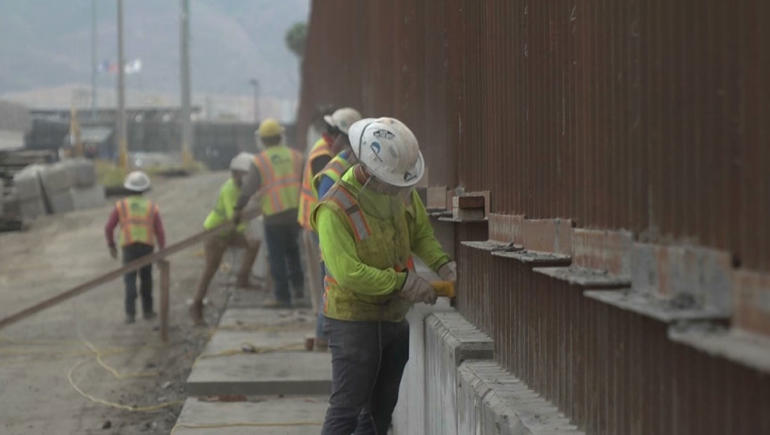U.S. President Donald Trump said new walls will drastically reduce illegal drugs from entering the country. Some experts point out though, most narcotics enter through official crossings. But some come through other routes, including tunnels.
CGTN’s Dan Williams has more from the Mexico-California border.
A team of workers busily continue the construction of a new reinforced border fence. The secondary fence between Tijuana, Mexico and the state of California will tower more than nine- meters high. The aim is to make it extremely difficult for traffickers to break through.
But if navigating the ‘wall’ becomes more challenging, the focus will then fall on other areas.
One option, would be to go around the fence this area—more than 22 meters from the sea is without any border. But another option is to go under.
“In San Diego alone, we have discovered 70 cross border tunnels. 36 of those are of the sophisticated kind. We’ve seen them as long as 3,000 feet,” said Lance Lenoir, of Director of Logistics in San Diego for the U.S. Border Patrol
So-called ‘narco-tunnels,’ operated by drug cartels, are known to have been in existence since the 1990s. U.S. Border Patrol agent Lance Lenoir is about to show us the Galvez tunnel, near the U.S.-Mexico border that was discovered in 2009 but it was never completed.
Lance heads down first. And then it is my turn.
There’s a foot of water down at the bottom of the tunnel. One side of the tunnel is Mexico, which has been blocked off, and the other side is the U.S.
When discovered, the tunnel had a rail system as well as electricity that was used for lighting and to power tools.
The tunnel has been kept in place so that officers can test the effectiveness of new detection technology and for training new officers. Despite many successes over the years, Lance believes there are more tunnels nearby that have yet to be detected.
Although the Drug Enforcement Administration has reported that the vast majority of narcotics come through legal ports of entry, there is still an argument that a border wall will stop drugs from entering the U.S. This suggests that is unlikely to be the case.
 CGTN America
CGTN America

